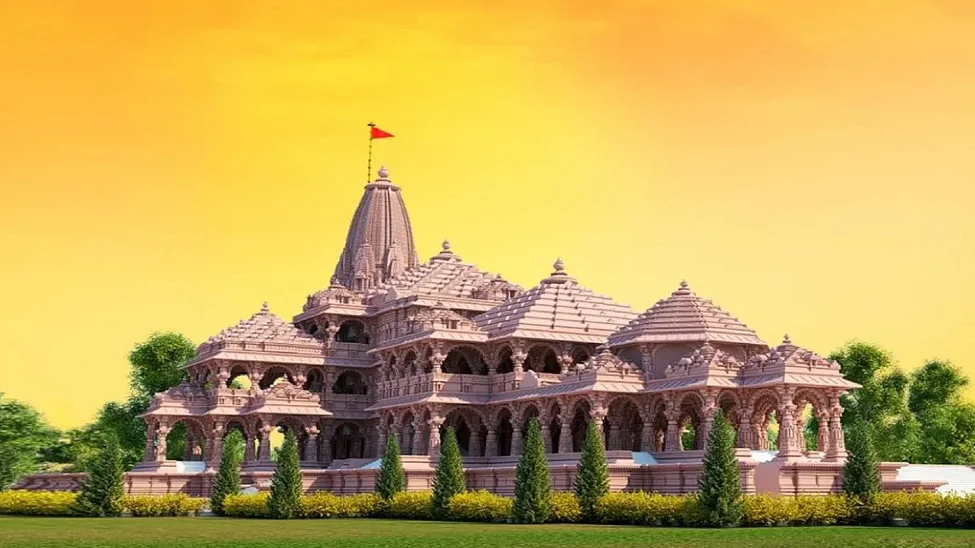
Ram temple for Hindus, not against Muslims
Babri structure was never a masjid as no prayer was offered in years; even Quran disapproves building a masjid on temple remnants
“The Economist” has erred in its report on building of a temple for Lord Ram at Ayodhya. Banyan, the columnist in his write up headlined “Narendra Modi is about to fulfil a core promise to Hindus” in the edition dated December 1, 2022 made a desperate attempt to mix Hindu beliefs, ruling BJP’s campaigns and larger governance issues to derive a heady mix.
This is symptomatic of several commentators or global media houses that take things granted on issues dear to Hindus in India and elsewhere in the world.

To state that the disputed structure pulled down by devout Hindus on December 6 thirty years back as a 16th century mosque reflects writer’s lack of understanding on faith issues. A cursory look at the proceedings in Supreme Court would clearly surmise that no Muslim ever offered prayer at the disputed structure since 1934. This fact has been completely ignored by the columnist.
Pulling down a structure on which no prayer was ever offered in last 58-years has been portrayed as an “act of desecration” that sparked riots. This leads to a larger question of India’s civilizational history. Can “The Economist” deny the fact that India was subjected to invasion by aggressors including the British imperialists that transcended to do business and Muslim invaders that eyed India’s pristine wealth and defacing of its rich cultural history, civilizational contribution to the world.
To attribute political colour to ‘people’s movement’ for building a Ram temple is again out of place. Several parties’ leaders and people from all walks of life joined the movement that began much before Sh. Narendra Modi and his party BJP made a bid for power in 2014.
Though the movement gained momentum in 1985, the disputed structure’s erection was challenged way back in 1858 and first cases were filed in 1885. Ignoring historical facts corroborated by Archaeological Survey of India and other evidence, how does “The Economist” attribute Hindus movement to certain political leaders or whipped up agenda?

Muslim religious texts and Quran does not approve of destruction of temples to build their own places of worship. How does Babri structure become a masjid that was built on a pre-existing temple that was there for millennia?
Suggestions to the effect that public funds are being used in part to construct the Ram temple at Ayodhya is factually incorrect given that not one rupee from public coffers have ever been deployed in the construction. Devotees from across the country have contributed to the construction of temple and not from public finances.
Assumptions on other places of dispute including the structure in Varanasi are far-fetched while the issue is being heard in courts and India has a water tight established law to deal with such disputes. The comment suggesting Qutub Minar may go the Hindu way is again sacrilegious writing and part of ‘The Economist’s agenda push to publish such pieces.
Jammu and Kashmir turned into a Muslim majority state only after Hindus were subjected to genocide, abuse, rape and forcefully driven out. If ‘The Economist’ had cared to even have a cursory look at the Indian Constitution that was amended periodically, Article 370 that offered special status to Kashmir was temporary. In any case, no one country can be governed by two constitutions that run their writ in parallel. Is there any European country that has two separate constitutions to govern is the question ‘The Economist’ has to pose for itself before making an erroneous commentary?
On the triple talaq that dehumanizes Muslim women, ‘The Economist’ may have to come up-front and make its stand clear. Is it in support of ‘triple talaq’ that has been abused not just in India but globally? In entire Europe and elsewhere, does triple talaq exist in the statute?
The Economist view on India’s state of economy as that appears in Banyan’s name is rather ridiculous. How does a reputed media house ignore the fact that India has been one of the fastest growing large economies before, during and in the aftermath of Covid-19 pandemic globally? On most development parameters, India has made fast strides and not getting bogged down in recession as in the case of most European economies and the United States.
Prime Minister Narendra Modi has been made the whipping boy in the entire write up notwithstanding that majority Indians who exercised their franchise elected him to lead the country. In a multi-party democracy like India, it’s the majority polled votes that count. This basic point seems to have been conveniently missed. Another factually incorrect statement made by the commentator was that Prime Minister laid the foundation stone for Ram Temple. On August 5 last year, he only performed puja to begin the construction while foundation stone was laid much before.

